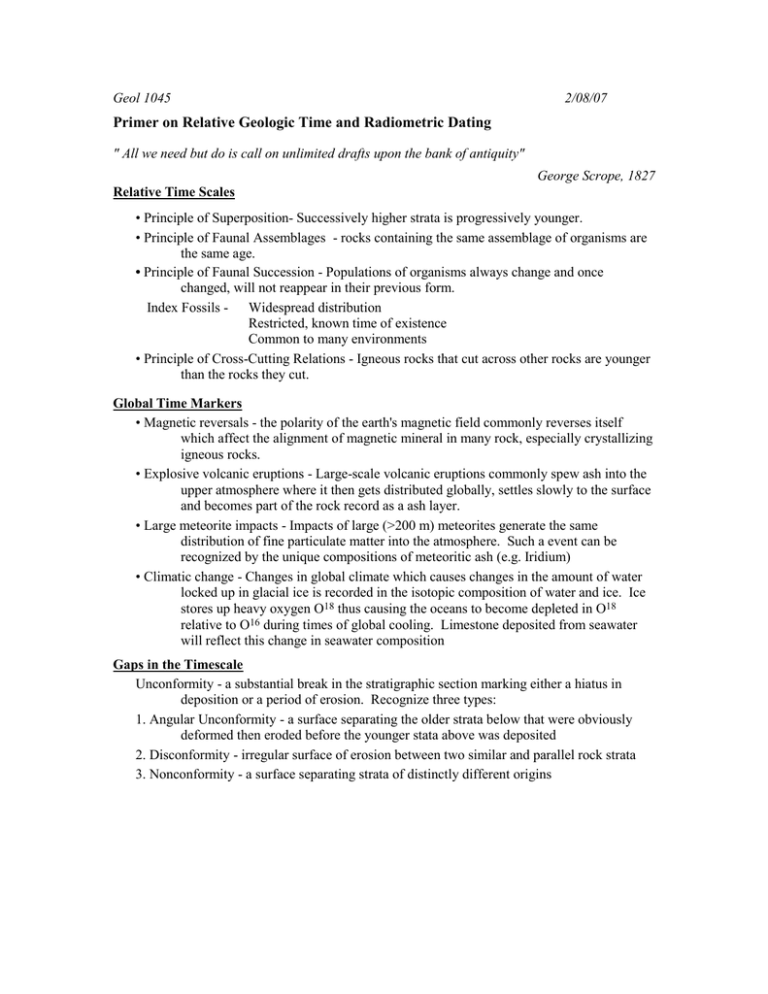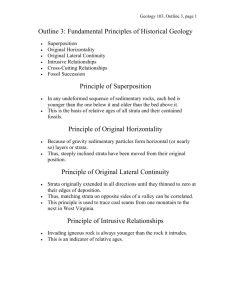Primer on Relative Geologic Time and Radiometric Dating
advertisement

Geol 1045 2/08/07 Primer on Relative Geologic Time and Radiometric Dating " All we need but do is call on unlimited drafts upon the bank of antiquity" George Scrope, 1827 Relative Time Scales • Principle of Superposition- Successively higher strata is progressively younger. • Principle of Faunal Assemblages - rocks containing the same assemblage of organisms are the same age. • Principle of Faunal Succession - Populations of organisms always change and once changed, will not reappear in their previous form. Index Fossils - Widespread distribution Restricted, known time of existence Common to many environments • Principle of Cross-Cutting Relations - Igneous rocks that cut across other rocks are younger than the rocks they cut. Global Time Markers • Magnetic reversals - the polarity of the earth's magnetic field commonly reverses itself which affect the alignment of magnetic mineral in many rock, especially crystallizing igneous rocks. • Explosive volcanic eruptions - Large-scale volcanic eruptions commonly spew ash into the upper atmosphere where it then gets distributed globally, settles slowly to the surface and becomes part of the rock record as a ash layer. • Large meteorite impacts - Impacts of large (>200 m) meteorites generate the same distribution of fine particulate matter into the atmosphere. Such a event can be recognized by the unique compositions of meteoritic ash (e.g. Iridium) • Climatic change - Changes in global climate which causes changes in the amount of water locked up in glacial ice is recorded in the isotopic composition of water and ice. Ice stores up heavy oxygen O18 thus causing the oceans to become depleted in O18 relative to O16 during times of global cooling. Limestone deposited from seawater will reflect this change in seawater composition Gaps in the Timescale Unconformity - a substantial break in the stratigraphic section marking either a hiatus in deposition or a period of erosion. Recognize three types: 1. Angular Unconformity - a surface separating the older strata below that were obviously deformed then eroded before the younger stata above was deposited 2. Disconformity - irregular surface of erosion between two similar and parallel rock strata 3. Nonconformity - a surface separating strata of distinctly different origins



